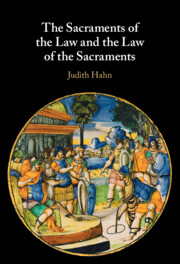This article identifies, details, and contextualizes three stages in the development of the consecration rites for abbesses and abbots in liturgical books produced for bishops in England from 900 to 1200. It shows how these rites, through the prayers recited, insignia bestowed, chants sung, and bodily gestures performed, sought to articulate and impress the normative ideals of monastic leadership on those who were elected to exercise it and how liturgists variously altered these rites in response to changing ecclesiastical pressures. Most significantly, for much of the late Anglo-Saxon period, the consecration rites for abbesses and abbots were the same, but, over the course of the late eleventh and twelfth centuries, the rites were split along gender lines with the dissemination, adoption, and adaptation of the ordines found in episcopal books affiliated with the tradition commonly identified by scholars as the Pontifical Romano-Germanique. In sharp contrast to their predecessors, the new rites envisioned dramatically different spiritual and temporal authorities for abbesses and abbots, clearly subordinating the former's office to the latter's by thoroughly feminizing its exemplary form. Yet, as close study of the material remains from communities of women religious during this period reveals, the consecration rite for abbesses was limited in its effect on how they actually fashioned and displayed their own authorities.
